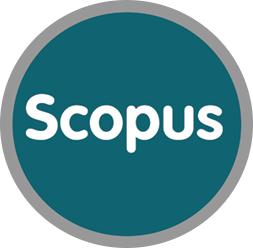Зв’язана вода в комплексі ДНК-хлорофілін
DOI: https://doi.org/10.15407/hftp06.03.399
Анотація
Ключові слова
Посилання
1. Dashwood R.H. Chlorophylls as anticarcinogens (Review). Int. J. Oncol. 1997. 10(4): 721.
2. Vesenick D.C., De Paula N.A., Niwa A.M., Mantovani M.S. Evaluation of the effects of chlorophyllin on apoptosis induction, inhibition of cellular proliferation and mRNA expression of CASP8, CASP9, APC and β-catenin. Curr. Res. J. Biol. Sci. 2012. 4(3): 315.
3. Pietrzak M., Wieczorek Z., Wieczorek J., Darzynkiewicz Z. The «interceptor» properties of chlorophyllin measured within the three-component system: Intercalator–DNA–chlorophyllin. Bioph. Chem. 2006. 123(1): 11.https://doi.org/10.1016/j.bpc.2006.03.018
4. Neault J.F., Tajmir-Riahi H.A. Structural analysis of DNA-chlorophyll complexes by Fourier transform infrared difference spectroscopy. Biophys. J. 1999. 76(4): 2177. https://doi.org/10.1016/S0006-3495(99)77372-8
5. Kostjukov V.V., Khomutova N.M., Evstigneev M.P. Hydration change on complexation of aromatic ligands with DNA: molecular dynamics simulations. Biopolymers and Cell. 2010. 26(1): 36 [in Russian].https://doi.org/10.7124/bc.000142
6. Tajmir-Riahi H.A., Neault J.F., Diamantoglou S. DNA adducts with chlorophyll and chlorophyllin as antimutagenic agents: synthesis, stability, and structural features. Methods Mol. Biol. 2004. 274: 159.https://doi.org/10.1385/1-59259-799-8:159
7. Poornima C.S., Dean P.M. Hydration in drug design. 1. Multiple hydrogen-bonding features of water molecules in mediating protein-ligand interactions. J. Comput. Aided Mol. Des. 1995. 9(6): 500.https://doi.org/10.1007/BF00124321
8. Qu X., Chaires J.B. Hydration changes for DNA intercalation reactions. J. Amer. Chem. Soc. 2001. 123(1): 1.https://doi.org/10.1021/ja002793v
9. Han F., Chalikian T.V. Hydration changes accompanying nucleic acid intercalation reactions: volumetric characterizations. J. Amer. Chem. Soc. 2003. 125(24): 7219. https://doi.org/10.1021/ja030068p
10. Cuya Guizado T.R., Louro S.R.W., Anteneodo C. Hydration of hydrophobic biological porphyrins. J. Chem. Phys. 2011. 134(5): 055103. https://doi.org/10.1063/1.3544376
11. Mancera R.L. Molecular modeling of hydration in drug design. Curr. Opin. Drug Disc. Devel. 2007. 10(3): 275. PMid:17554853
12. Khorunzhaya O.V., Kashpur V.A., Pesina D.A., Maleev V.Ya. Hydration changes under complexation of DNA with some intercalators. Biophysical Bulletin. 2010. 24(1): 5 [in Russian].
13. Kashpur V.A., Khorunzhaya O.V., Maleev V.Ya. Hydration changes in complexation of DNA with ligands as revealed by dielectrometry. Dopovidi NAN Ukrayiny. 2010. 7: 170 [in Russian].
14. Kashpur V. A., Maleyev V. Ya., Shchegoleva T.Yu. Issledovaniya gidratatsii globulyarnykh belkov differentsial'nym dielektrometri-cheskim metodom. Molecular Biology. 1976. 10: 568 [in Russian].
15. Kashpur V.A., Maleyev V.Ya., Khorunzhaya O.V. Application of differential method of EHF dielectrometry in molecular biophysics. Radíofízika ta elektroníka. 2008. 13: 446 [in Russian].
16. Ellison W. J., Lamkaouchi K., Moreau J.-M. Water: A dielectric reference. J. Mol. Liquids. 1996. 68(2–3): 171.https://doi.org/10.1016/0167-7322(96)00926-9
17. Hippel A.R. Dielectrics and Waves. (New York: Wiley, 1954).
Hasted J.B., Roderick G.W. Dielectric properties of aqueous and alcoholic electrolytic solutions. J. Chem. Phys.1958. 29(1): 17. https://doi.org/10.1063/1.1744418
18. Antropov L.I. Teoreticheskaya elektrokhimiya. (Moskva: Vysshaya shkola, 1975) [in Russian].
19. Rabinovich V.A., Khavin Z.Ya. Kratkiy khimicheskiy spravochnik. (Leningrad: Khimiya, 1978) [in Russian].
20. Kaatze U. The dielectric properties of water in its different states of interaction. J. Solut. Chem. 1997. 26(11): 1049. https://doi.org/10.1007/BF02768829
21. Mashimo S., Kuwabara S., Yagihara S., Higasi K. Dielectric relaxation time and structure of bound water in biological materials. J. Phys. Chem. 1987. 91(25): 6337. https://doi.org/10.1021/j100309a005
22. Craig D.Q.M. Dielectric analysis of pharmaceutical systems. (London, Bristol: Taylor & Francis, 1995).
23. Globus T.R., Woolard D.L., Khromova T., Crowe T.W., Bykhovskaia M., Gelmont B.L., Hesler J., Samuels A.C. THz-spectroscopy of biological molecules. J. Biol. Phys. 2003. 29(1): 89.https://doi.org/10.1023/A:1024420104400
24. Bresler S.Ye. Vvedeniye v molekulyarnuyu biologiyu. (Moskva: Nauka, 1970) [in Russian].
25. Privalov P.L. Biophysics (Biofizika). 1968. 13(1): 163 [in Russian].
26. Harmouchi M., Albiser G., Premilat S. Changes of hydration during conformational transitions of DNA. Eur. Biophys. J. 1990. 19(2): 87. https://doi.org/10.1007/BF00185091
27. Saenger W. Principles of nucleic acid structure. (NY-Berlin-Heidelberg-Tokyo: Springer-Verlag, 1984).
28. Buchanan T.J., Haggis G.H., Hasted J.B. The dielectric estimation of protein hydration. Proc. Roy. Soc. 1952.A213(1114): 379. https://doi.org/10.1007/BF02394559
29. Bonchev D., Cremaschi P. C-H group as proton donor by formation of a weak hydrogen bond. Theoret. Chim. Acta (Berl.) 1974. 35(1): 69.
30. Sun J., Bousquet D., Forbert H., Marx D. Glycine in aqueous solution: solvation shells, interfacial water, and vibrational spectroscopy from ab initio molecular dynamics. J. Chem. Phys. 2010. 133(11): 114508.https://doi.org/10.1063/1.3481576
31. Kharakoz D.P. Partial molar volumes of molecules of arbitrary shape and the effect of hydrogen bonding with water. J. Solut. Chem. 1992. 21(6): 569. https://doi.org/10.1007/BF00649565
32. Pastor N. The B- to A-DNA transition and the reorganization of solvent at the DNA surface. Bioph. J. 2005.88(5): 3262. https://doi.org/10.1529/biophysj.104.058339
33. Umehara T., Kuwabara S., Mashimo S., Yagihara S. Dielectric study on hydration of B-, A-, and Z-DNA. Biopolymers. 1990. 30(7–8): 649. https://doi.org/10.1002/bip.360300702
DOI: https://doi.org/10.15407/hftp06.03.399
Copyright (©) 2015 V. A. Kashpur, D. A. Pesina, O. V. Khorunzhaya, V. Ya. Maleev, A. V. Shestopalova


This work is licensed under a Creative Commons Attribution 4.0 International License.



